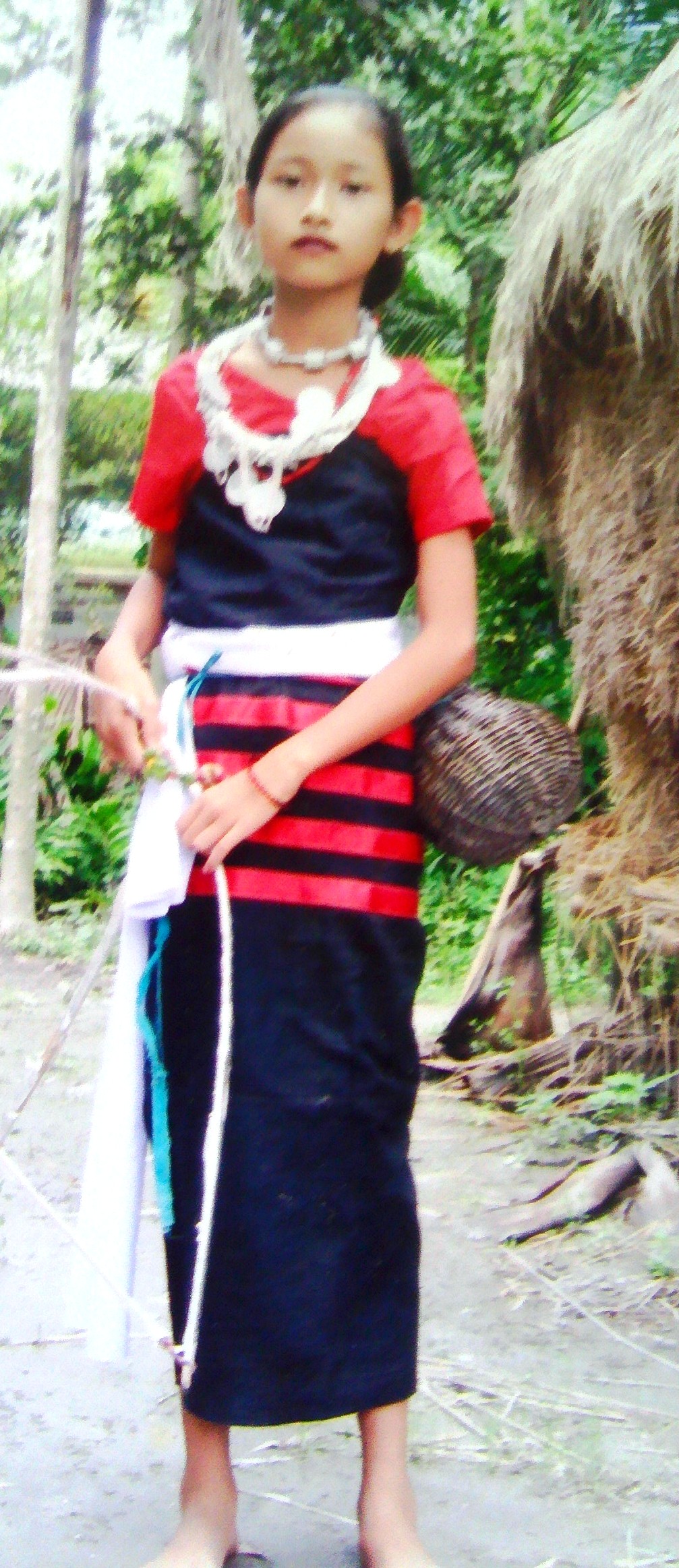|
|

|
Dhimal Documentation
|
|
Language and Geography
|
Dhimal is a Tibeto-Burman language. It is spoken in India and Nepal. In India it
is mainly spoken in Darjeeling district of West Bengal. It is spoken in three villages
of Naxalbari. Dhimal speakers mainly speak Dhimal, Rajbanshi, Bengali and Hindi.
Some of them can even speak Santali, Sadri and Nepali. They work mainly as farmers
and government contractors. Females work in Anganbari centres.
Dhimal speakers have Rajbanshi and Bengali neighbours. Many words can be seen to
be borrowed in Dhimal from Rajbanshi, Bengali and Hindi with minor phonological
changes like Beard- d̪arih (same in Bengali and Hindi), Finger- aŋuli (aŋul in Bengali),
Palm-t̪ala (t̪alu in Bengali). Bengali script is used to write the language.
The language has lost many of its lexical items like body parts and numbers. Bengali
numbers are used for counting. However it has retained its structural features.
Like, the language has honorific morpheme /su/. Its absence marks the verb as non-honorific.
Following examples show the contrast between honorific and non-honorific marking.
1. um ca
rice eat
Eat rice. (-HON)
2. um ca su
rice eat HON
Eat rice. (+HON)
Dhimal, unlike Bengali, has different verbs for eating and drinking. The verb, ‘to
eat’ is /ca/ (e.g. 2) while the verb ‘to drink’ is /am/.
3. gora am su
alcohol drink (+HON)
Drink alcohol (Hariya).
|
|
|
|
Tradition and Religion
|
Dhimal celebrate village festival called Pat Puja. They also celebrate
Hindu festivals like Diwali and Dussehra. The person who performs the rituals is
called Dhami. Dhimal people claim they are followers of Natural religion
which means they mainly worship Nature, because Nature provides them their food
and shelter. In their festivals all the members of the community, including children,
drink the locally prepared alcohol called Gora or Iu.
The traditional dress of Dhimal is called Patanighat which is made in the
combination of red and black. The place where these dresses are made is called Gharelu.
Dhimal women wear jewelries called Satia (nose pin), Tisi (neck
chain) and Bahi (bangles).
|
|
|
|
Work in Progress
|
|
At present, Dhimal dictionary is being prepared in SPPEL. This dictionary other
than Dhimal head words also contains meaning in English and the regional language,
marking of parts of speech, semantic domain, sound file, picture file and example
sentence in Dhimal and its meaning in English. Soon the work of grammar writing
will also start. Now the phonological analysis is under progress.
|
|
Transcribed word
|
pet̪ani
|
|
Gloss
|
Traditional dress for females
|
|
Regional script (Bangali)
|
পেতানি
|
|
|

|
|
|
Transcribed word
|
beɟan
|
|
Gloss
|
Woman
|
|
Regional script (Bangali)
|
বেজান
|
|
|

|
|
|
Transcribed word
|
pʰui
|
|
Gloss
|
Hand
|
|
Regional script (Bangali)
|
ফুই
|
|
|

|
|
|
Transcribed word
|
t̪ʰa:
|
|
Gloss
|
House
|
|
Regional script (Bangali)
|
থা
|
|
|

|
|
|
Transcribed word
|
siŋ
|
|
Gloss
|
Tree
|
|
Regional script (Bangali)
|
সিং
|
|
|

|
|
|
Transcribed word
|
nunu
|
|
Gloss
|
Child
|
|
Regional script (Bangali)
|
নুনু
|
|
|

|
|
|